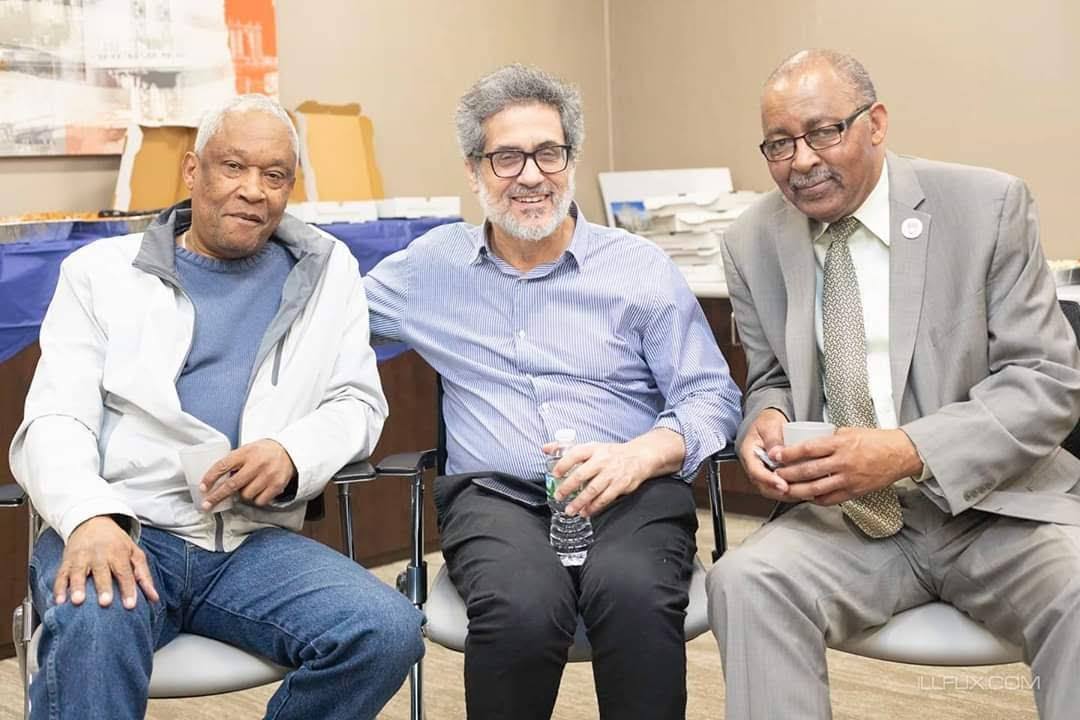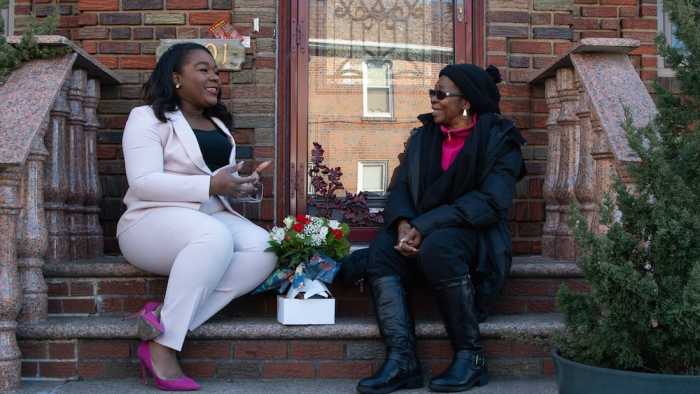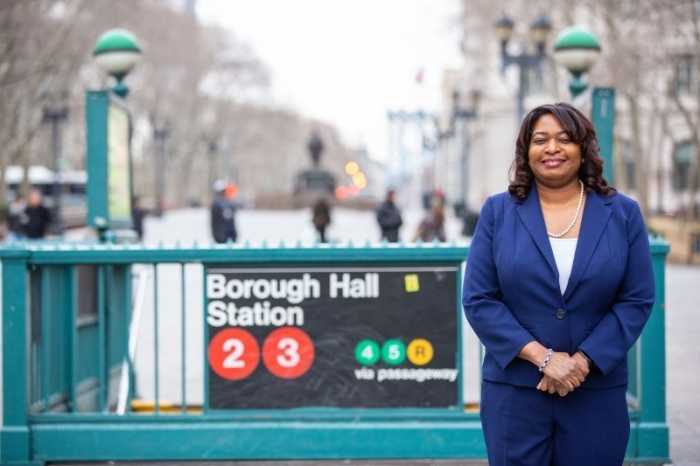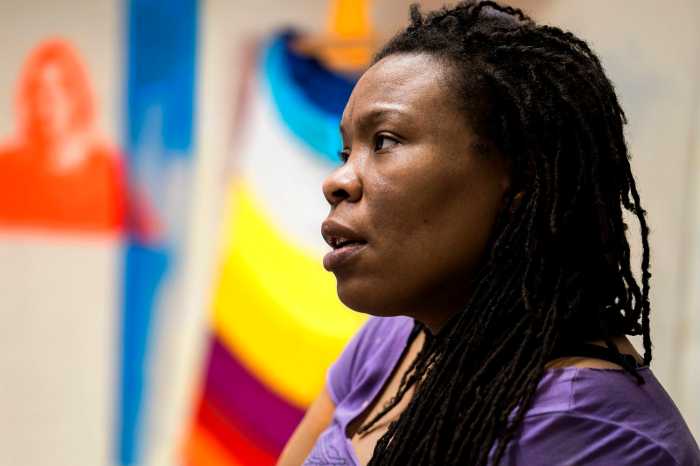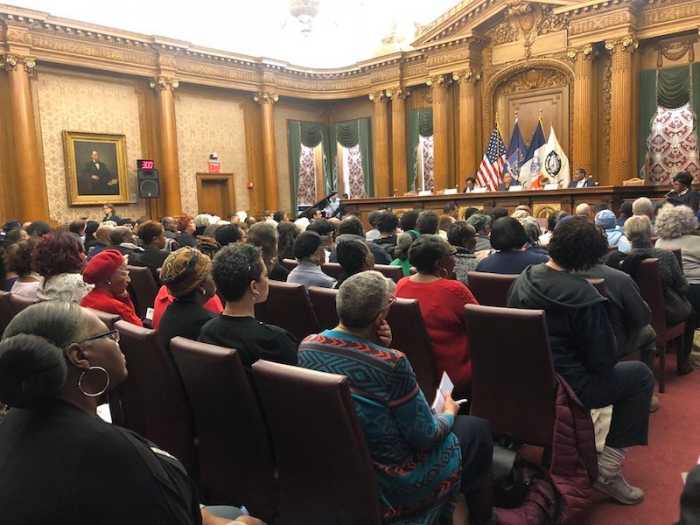Brooklyn’s unempowered Black community suffered a major loss on May 27 with the death of their champion, James Caldwell at 69. His life’s work inspired and lifted me. It also humbled me to the idea that while I rub shoulders with the powerful as a political journalist, I report to and for the common people that the powerful serve, and not the other way around.
I first met Mr. Caldwell in 2001, shortly after covering the September 11 terrorist attack, while he worked closely on the insurgent city council election campaign for the late James E. Davis, along with Davis’ brother Geoffrey.
Davis ran against Central Brooklyn’s well-oiled Black-American political machine. This hierarchy included Assembly members Clarence Norman, Roger Greene and Albert Vann. Davis, a retired cop, was a thorn in the side of the machine. They had a top-down philosophy for Black empowerment and Davis believed in Black self-empowerment from the streets up. He and his brother Geoff started an organization called “Love Yourself Stop the Violence” dedicated to fighting black against black crime.
This resonated with Caldwell, the civilian president of the 77th Police Precinct Community Council in Crown Heights, and a good many Blacks on the street not connected to this machine. This led James Davis into politics, and after several tries with Caldwell’s help, he beat Noman for his unpaid Democratic district leader seat. This set the stage for Davis to run for term-limited Mary Pinkett’s seat covering Fort Greene, Clinton Hill, Prospect Heights and parts of Downtown Brooklyn and Crown Heights.
While Davis had strong street cred, the machine put up Letitia (Tish) James, a smart, and ambitious attorney, who served as Vann’s chief of staff. She also did the machine’s work of challenging petitions of any Black insurgents that challenged this status quo.
In a close seven-person primary, Davis defeated James with nearly 38 percent of the electorate to James’ 32%. Davis’ tenacity and victory put a crack in the machine, giving rise to a slew of Black Democratic independents. This included, among others, Eric Adams, another former cop, who had started 100 Blacks in Law Enforcement Who Care, and young corporate attorney, Hakeem Jeffries.
I covered James Davis’ tenure in office mainly relating to the massive Downtown Brooklyn rezoning, which was part of his district. Through Davis, I met Bertha Lewis, CEO and Chief Organizer for the largely Black social justice nonprofit, ACORN. There was talk of Davis running for mayor.
This was cut short when a political rival assassinated Davis in the City City Council Chamber in July 2003. Davis never saw the massive rezoning get approved in 2004 or his political ambition come to fruition. I covered the funeral and afterward remained close with both Mr. Caldwell and Geoffrey Davis.
After Davis’ death, James finally succeeded in getting to the city council, defeating Geoffrey in a bitter special election to succeed his brother. Mr. Caldwell backed James in the election. This caused friction with the Davis family as he was close to them. It should be noted, however, that Caldwell until his death remained a political maverick not aligned to any particular movement or party.
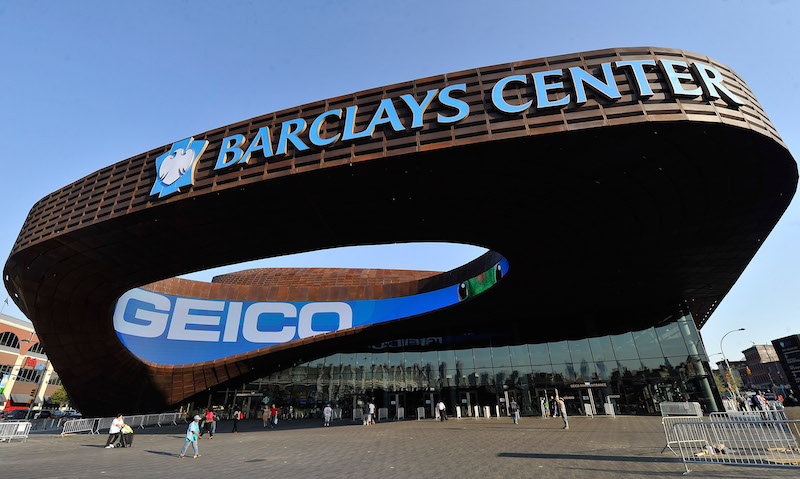
My relationship with Mr. Caldwell became closer in 2003 when Developer Bruce Ratner bought the Brooklyn Nets and announced the massive 22-acre Atlantic Yards project including an arena to house the Nets at the Atlantic/Flatbush avenues intersection.
The once desolate area had become gentrified. Those living in and around the project footprint were mainly white progressives wanting to turn the neighborhood into a quaint urban area of low-rise buildings similar to nearby Park Slope. James, perhaps sensing the political winds, sided with the gentrifiers.
Caldwell, along with a number of black activists and leaders, that included Lewis and Rev. Herbert Daughtry, backed the project. Whereas the gentrified community saw the development as a land grab, the Black community visualized opportunities for Black business start ups, jobs and affordable housing. They signed a community benefits agreement (CBA) with Ratner.
Through the CBA, Mr. Caldwell created a nonprofit, Brooklyn United for Innovative Local Development (BUILD). He was tasked with bringing jobs to the community through the project. In order to do this, Ratner rented him a storefront office at Fulton Street and Rockland Place in Downtown Brooklyn.
This storefront became a center point for Blacks looking for a leg-up. Career and social service caseworkers were made available at the office and BUILD placed a number of Blacks in jobs. At the very least, the office was there to help people put together resumes, make copies and send out emails. It was a welcoming place. I often stopped in while covering the project or sometimes because I was in the neighborhood. It was here, I often had long conversations with Caldwell about politics, religion and family.
With the possible exception of Councilwoman James, I gained a lot of respect from the Black community in covering the Atlantic Yards project. I also took it on the chin from the many white journalists who opposed the project. That, along with personal problems influenced my decision to take a buyout as a reporter from News Corp in 2009. Besides, the buyout package bought me much-needed time to write my roman à clef second novel about the project, The Street Singer.
I stayed close with Mr. Caldwell, though. At his invitation, I visited several Central Brooklyn churches from Thanksgiving through the Christmas seasons, feeding, eating with and entertaining the homeless and low-income children at charity toy giveaways. As a former subway musician, I know an array of Christmas songs and performed them at these events as well as downstairs at the Atlantic Terminal Mall, where Mr. Caldwell played Santa during the Christmas season.
In 2010, I was afforded an opportunity to become a freelance editor, reporter and columnist with Our Time Press, a highly respected African-American weekly out of Bedford-Stuyvesant. I was hesitant to take the job. On the plus side, I never covered Bed-Stuy or Northern Crown Heights and the journalist in me saw fresh ground to tackle. On the minus side, I felt like an interloper, being white and covering the Black Community’s political and social legacy.
Thinking this, I visited Mr.Caldwell in the BUILD office, and on his advice, I took the job. Walking the Bed-Stuy streets every week and telling the stories of the people making up the rich tapestry of the Black-American community reinvigorated my belief in journalism and provided a second wind in my career.
On the government side, Our Time Press tasked me with covering the very machine I had previously written about but never knew. It was centered around the political club that Vann had started, the Vanguard Independent Democratic Association (VIDA). The longtime Bed-Stuy City Councilwoman Annette Robinson was term-limited out of office, and she and Vann swapped offices to stay in power. Vann was elected to the city council and Robinson to the State Assembly.
My Our Time Press bosses respected both Vann and Robinson but felt a transition was needed for new Black leadership.
For this publication, I covered both Bloomberg and Vann’s third and final term, as well as the election of Bill de Blasio as mayor, Tish James as the new public advocate, Hakeem Jeffries to Congress, Robert Cornegy as the new city councilman and Tremaine Wright as the new assemblywoman.
Through all this, Mr. Caldwell remained both a good friend and strong source, often bridging the gap between Central Brooklyn’s Black elected officials and the people from the community they served. Besides being president of the 77th Precinct Community Council, he also sat on the board of two nonprofits – one helping formerly incarcerated people and the other helping former drug addicts.
De Blasio’s election as mayor came with an unprecedented one-year honeymoon in both the Black community and much of the media. In the Black community, much of this was due to de Blasio’s Black wife Chirlane McCray and his biracial children. In reality, however, the de Blasios were a Park Slope political couple entrenched in the white progressive movement of that neighborhood. For the most part, their relationship with Brooklyn’s Black-American community was to Al Vann and the old political guard, including Rev. Al Sharpton’s Political Action Network based out of Harlem.
Within six months of taking office, Mr. Caldwell contacted me about communication problems the de Blasio Administration and then NYPD Police Commissioner Bill Bratton were having with the local presidents from Central Brooklyn’s police community councils.
I wrote several stories about this for Our Time Press, and Kings County Politics (KCP), the digital news publication I had started. This culminated with Mr. Caldwell successfully lobbying then Public Advocate James to intervene and take action on behalf of the community council presidents.
The stories I wrote about this with Mr. Caldwell being the whistleblower put an egg on the face of the de Blasio Administration. They tried to discredit his work in the community through a political operative. Mr. Caldwell responded by calling for a special “Little Peoples” Town Hall to confront the de Blasio Administration for not involving local clergy and community leaders about issues in the community.
At the time, Mr. Caldwell had a hot dog stand across the street from the Barclays Center, and the Administration responded by issuing $3,200 in health inspection tickets on his cart in one day.
Besides problems with de Blasio Administration, Caldwell’s work on behalf of Brooklyn’s Black-American community began to expose a wide gap between white progressives, who were increasingly gentrifying and imposing their political agenda on Central Brooklyn.
Exasperating the situation is that Bed-Stuy and much of Crown Heights traditionally allowed for Black homeownership – something Blacks were denied through redlining in upscale neighborhoods such as Park Slope. These Black-owned Central Brooklyn properties bought in the 60s, 70s and 80s, were now often worth north of $1 million.
This increased market value made many Blacks, particularly seniors on fixed income, cash poor and property rich, and prey to the market and social forces. This included whites gentrifying these neighborhoods that sought reduced rents, Satmar Jews looking to expand from Williamsburg north of Flushing Avenue, predatory mortgage lenders and numerous nonprofit developers that had and continue to have cozy relationships with both white progressive and Black and Brown elected officials.
When an elderly Black woman lost her home due to a predatory lender and was left homeless, Mr. Caldwell went to every Black elected official for help and was ignored by all with the exception of half-hearted lip service from Tish James.
With no political local help to be found, Mr. Caldwell went alone to Trump Towers to speak with somebody, anybody who could relay a message to the Republican nominee for President Donald Trump about helping this senior citizen.
He was denied access but returned the next day where he gained a two-minute audience with Lynn Patton, then vice president of the Eric Trump Foundation (Donald’s Son) and who later served as the northeast regional director of the U.S. Department of Housing and Urban Development (HUD) in the Trump Administration.
The Trump family helped the senior get an apartment, and both she and Mr. Caldwell attended both the final presidential debate of the 2016 campaign and Trump’s inauguration as guests. Between Trump’s help and the progressive wing of the Democratic Party increasingly exerting power over both the Black community and the local elected Black leadership, Mr. Caldwell, a lifelong Democrat, switched party affiliation and became a registered Republican.
During this time at Our Time Press, I was increasingly tasked with covering the Satmar Jewish community encroaching on Bed-Stuy’s Black community way-of-life both socially and through real estate. This troubled me professionally and personally. While my fiduciary duty to Our Time Press was covering the Black community, I was and remain a loyal Jew and Israel supporter, and it was sometimes difficult covering some of the things the Satmar community was allegedly doing.
I covered a number of stories on these Black/Jewish issues but sat on others. This included further investigating the city’s Department of Buildings (DOB) taking bribes to expedite building permits, and de Blasio alleged personal involvement in allowing the construction of a Jewish school in Bed-Stuy without having building permits.
In 2015, I took to KCP full time while still doing the occasional story for Our Time Press. My first hire was Kelly Mena, a young Latina University of Florida journalism graduate, who had come to New York City to make her mark in journalism and has since been hired as a reporter for CNN.
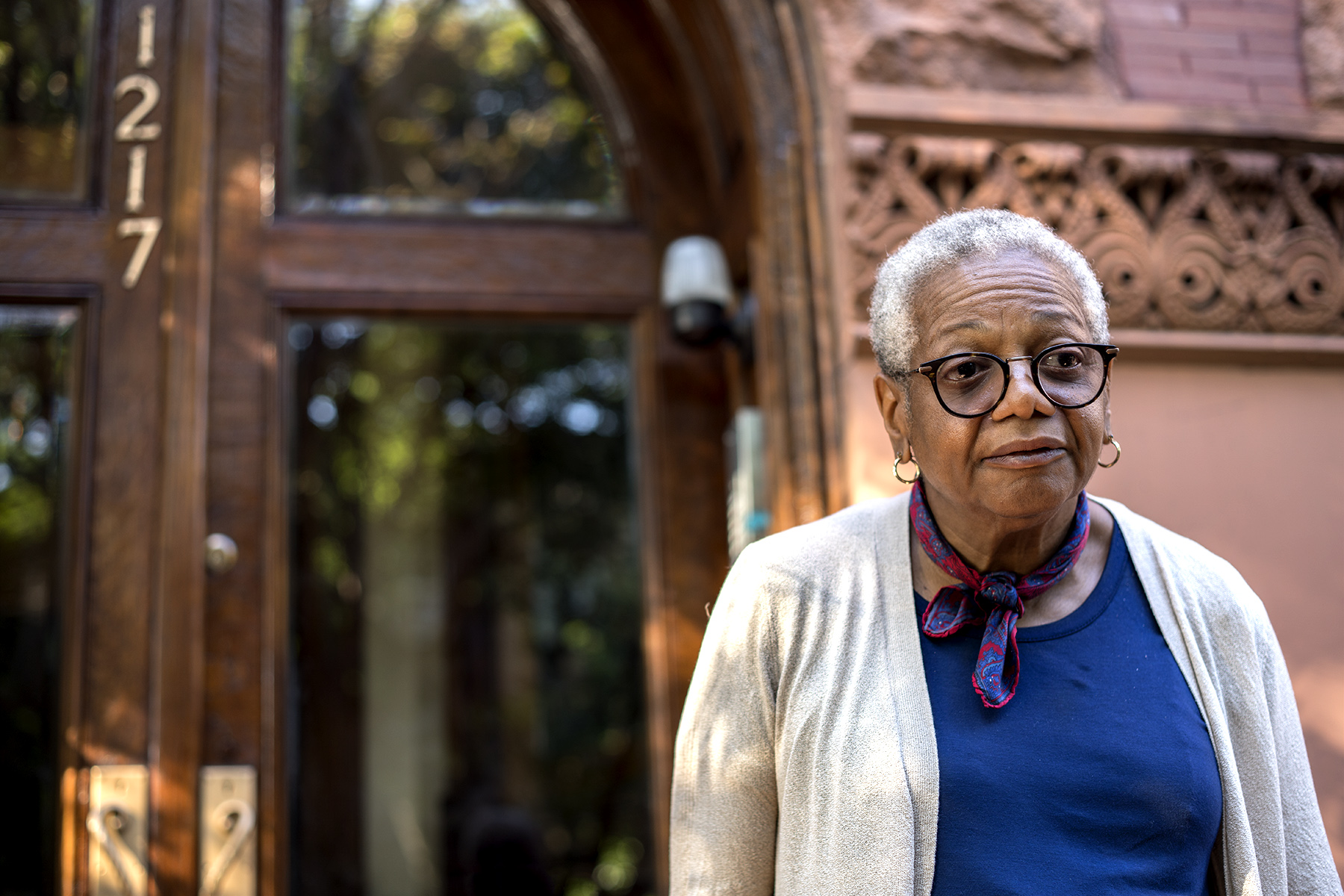
In September 2017, on a Saturday, I received an urgent call from Mr. Caldwell to come to the brownstone home of retired nurse, Marlene Saunders, 74, on Dean Street. Saunders received notice that the city’s Department of Housing and Preservation (HPD) was taking the property under the city’s Third Party Transfer (TTF) program.
The program designates qualified sponsors to purchase and rehabilitate distressed vacant and occupied multi-family properties in order to improve and preserve housing affordable to low-to moderate-income households.
This was news to Saunders’ family as their 100+ year old three-story brownstone had been in their family for more than 30 years, maintained immaculately and was free from loans, mortgage and had no current Department of Buildings violations. The property located on a rapidly gentrifying block was appraised at over $2.2 million.
The story I wrote about Saunders went viral and within days, Mr. Caldwell and others called me about similar situations with Black and Brown small property owners, who were losing their fully paid off properties under the TPT program.
For the next almost two years, Kelly and I, often with Mr. Caldwell’s help, wrote over 30 stories about this program such as here, here, here and here. It resulted with a number of properties being given back to their rightful owners, keeping millions of dollars of generational wealth in Black and Brown communities.
In retrospect, the stories exposed an ongoing nerve and issue regarding the progressive wing of the Democratic Party and their often semi-incestuous relationship with nonprofit property developers/managers.
The history of this relationship goes back to the city’s creation of HPD in 1978. At the time, the city was in financial straits and had to take over a number of derelict and burned-out properties.
This gave rise to the establishment of a number of nonprofit property developers and managers, who supported by zero and/or low-financing in redeveloping these properties, began to grow more powerful in the city political ecosystem.
In 1996, under the Republican Guiliani administration, the TPT program was created to transfer “derelict, tax-delinquent buildings to nonprofits that could rehabilitate and manage them”, ostensibly for working-class people, freeing the city from ownership, or responsibility for tenants.
In administering the TPT program, HPD followed a rule selecting “every other building in the same tax block with a lien—even for a few hundred dollars”—if even one was picked for TPT.
But according to former City Councilmember and now U. S. Rep. Ritchie Torres, the TPT process strips the minority owner of: the property; its value; and mitigates the seat equity and resources invested; all with no compensation.
“TPT is quite different from and far harsher than a typical foreclosure from the perspective of a property owner. If you are the target of a foreclosure, you get a share of the proceeds from the sale of your property,” said Torres.
Over the years, these non-profits expanded into other services such as foreclosure counseling, becoming involved with Business Improvement Districts and social services. In doing this, they have become and remain a political organizing tool for many local progressive electeds including Bill de Blasio, Letitia James, Antonio Renoso and Brad Lander to name a few.
However, as the city became increasingly gentrified and property values increased, these nonprofits saw their mission of redeveloping derelict properties dry up. So under the progressive mantra of affordable housing and the de Blasio Administration, they utilized TPT to target mainly black and Brown-owned properties as well as HDFC properties.
Our TPT series blindsided many progressive electeds, Tish James among them. Over the years, she developed close ties to a number of the non-profits that were getting the Black and Brown-owned properties for nothing. As public advocate, she was reluctant to call for an investigation of TPT, but thanks to both Mr. Caldwell and our coverage she couldn’t ignore it either.
James’ and other Brooklyn Black and Brown lawmakers close ties to these nonprofits led Mr. Caldwell to support Republican Keith Wofford in his unsuccessful race against James for state attorney general.
Covering the TPT series was a career highlight for both myself and Mena, and Mr. Caldwell was an integral source and part of this series.
But my recollections of Mr. Caldwell didn’t end there. He continued to call me up until just a few days before he died with story tips. Some never panned out. Others I actually followed up on but never wrote about such as meeting the family of the one-year-old shot and killed through gang-related violence surrounding NYCHA developments in Bed-Stuy. Mr. Caldwell led efforts in raising money to bury the infant.
But I did either write or assign and edit two fairly recent stories that Mr. Caldwell gave me.
The first was when Mr. Caldwell organized a group of Black residents breaking bread and airing out gripes they had with Jews at a kosher eatery in Crown Heights.
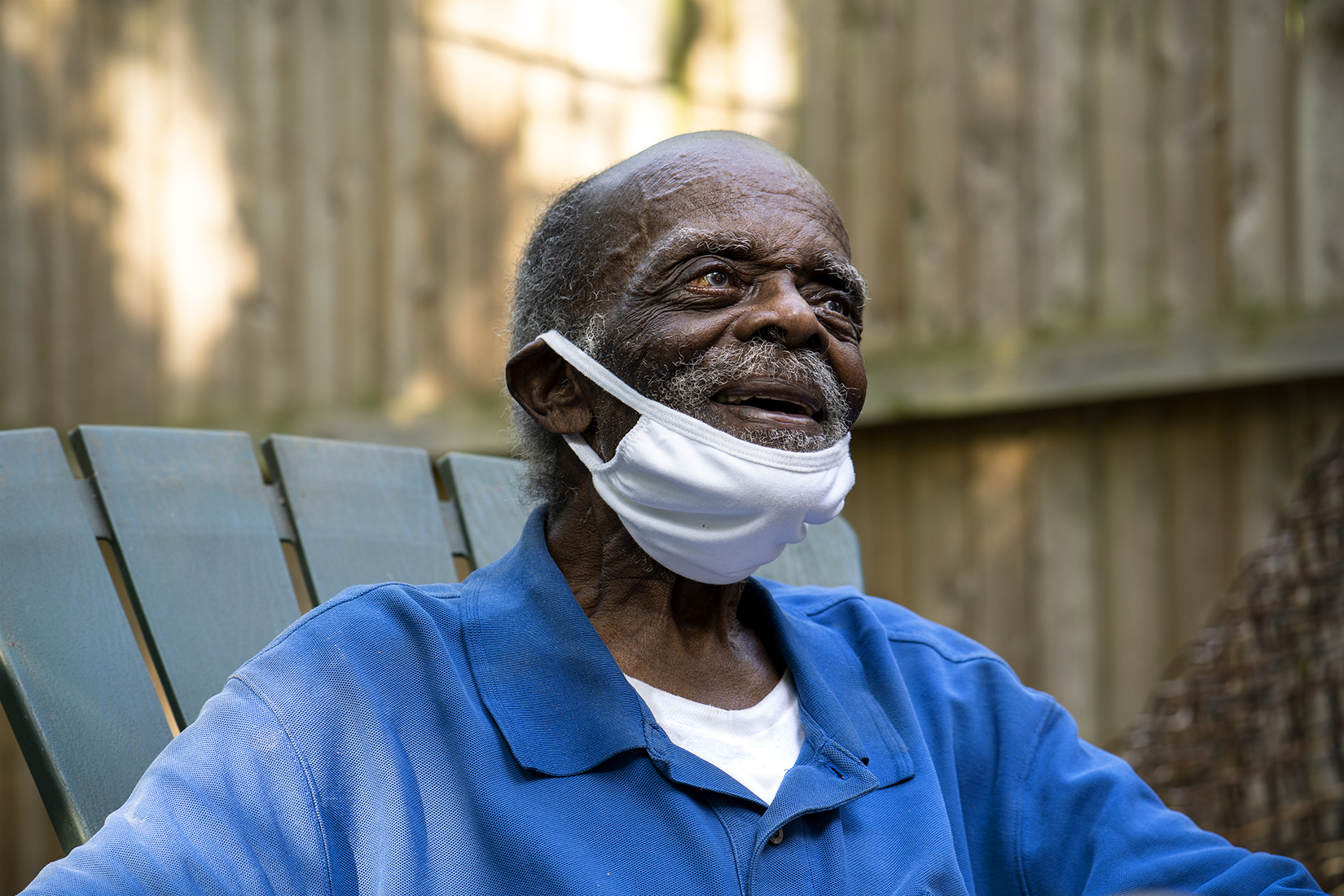
The second story was celebrating last July 4th with 100-year-old WWII U.S. Army Veteran James A. Been, with a backyard barbecue that included friends, family and elected officials in his Bedford-Stuyvesant brownstone.
The last time I saw Mr. Caldwell was the week before he died at an Eric Adams for mayor rally in Crown Heights. Mr. Caldwell had changed his party affiliation back to Democrat because he felt the Brooklyn GOP did not do enough outreach to the Black community. He strongly supported Adams for mayor.
James Caldwell was very Godly, but not a God. He was a man of faith, did God’s work in his dedication to helping those unempowered in his community and was a personal friend. I am honored that he trusted me so often to tell the stories of his community.
It is my hope his legacy serves as a reminder to such rising Black politicians as Letitia James, Eric Adams, Hakeem Jeffries and Robert Cornegy to never forget the underserved Black community. Not the ones that get ahead by knowing somebody with rank and privilege, but the ones blessed for being meek.
James Caldwell’s funeral is slated for this coming Wednesday, June 9 at The Co-Cathedral of St. Joseph of the Roman Catholic Diocese of Brooklyn, 856 Pacific Street between Vanderbilt and Underhill Avenues in Prospect Heights. Viewing is from 11 a.m. to 1 p.m., The service is from 1-2 p.m. There will be a repass in the church basement following the service.


